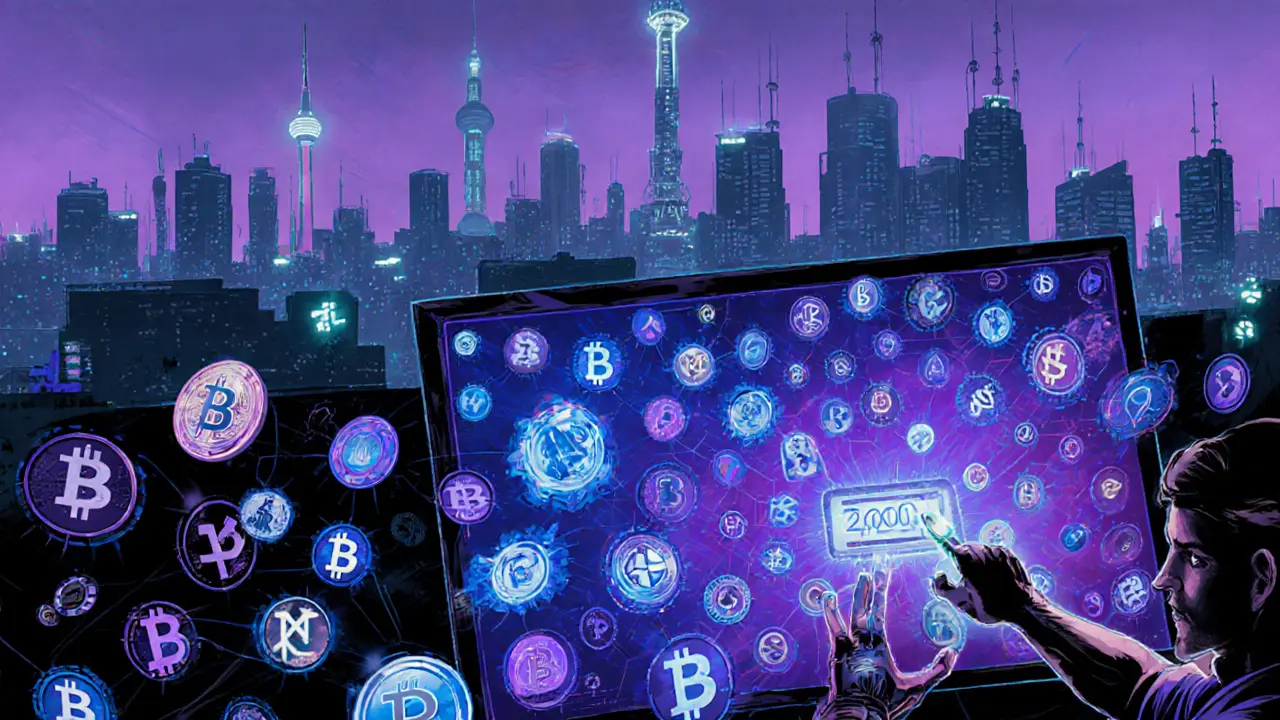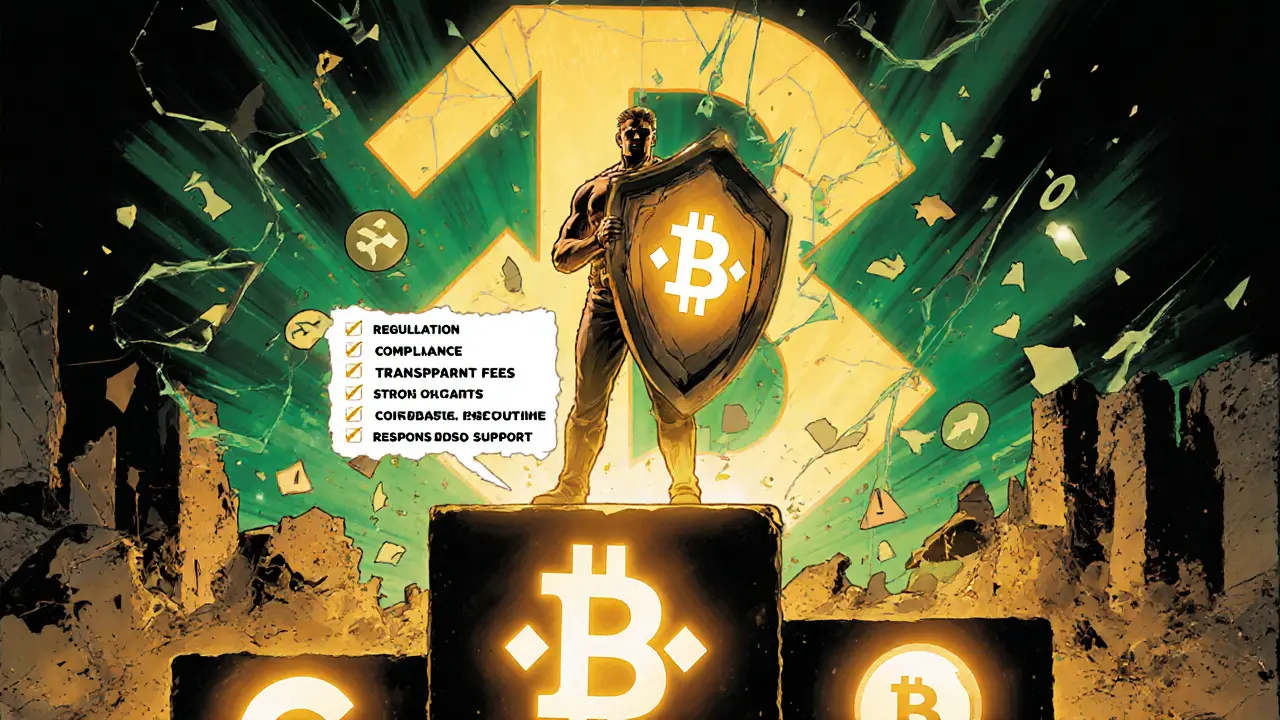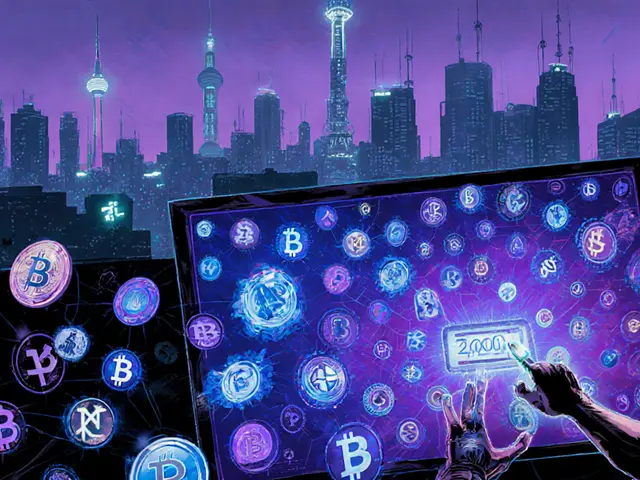- Home
- Cryptocurrency
- Hotbit Crypto Exchange Review: Features, Fees, and Shutdown Summary

Hotbit Crypto Exchange Review: Features, Fees, and Shutdown Summary
Hotbit Fee Comparison Calculator
Hotbit vs. Top Exchanges Fee Comparison
- Hotbit: Flat 30 USDT withdrawal fee for USDT
- Binance: 1-3 USDT withdrawal fee for USDT
- Coinbase: 2-5 USDT withdrawal fee for USDT
* Fees may vary based on network conditions and account verification levels
Savings Analysis
Your withdrawal of 0 USDT would cost:
- Hotbit: 0 USDT
- Binance: 0 USDT
- Coinbase: 0 USDT
By choosing Binance or Coinbase instead of Hotbit, you could save 0 USDT or 0 USDT respectively.
Key Takeaways
- Hotbit offered over 2,800 crypto assets but never provided fiat on‑ramps.
- Withdrawal fees were a flat 30USDT, far above industry standards.
- The platform operated without any recognized regulatory licence.
- Asset freezes in August2022 led to a permanent shutdown in May2023.
- Users who withdrew before the deadline recovered funds; others faced losses and many fell prey to recovery‑scam schemes.
Hotbit is a cryptocurrency exchange launched in 2018, headquartered in Shanghai and Taipei, that promoted a massive catalog of digital assets for coin‑to‑coin trading. The platform’s claim of supporting more than 2,800 tokens put it ahead of most rivals in sheer variety, yet it lacked fiat deposits, regulatory oversight, and transparent fee structures.
What Hotbit Promised
The exchange marketed itself as a one‑stop shop for traders seeking niche altcoins. Its core features included:
- Coin‑to‑coin trading pairs across all listed assets.
- A proprietary market‑making engine that purportedly reduced slippage on low‑liquidity tokens.
- Professional charting tools, real‑time analytics, and a mobile app for iOS and Android.
- Investment products such as staking and yield‑generating pools.
While the interface was praised for being clean and intuitive (Foreck.info 2023), the lack of a built‑in fiat gateway forced users to rely on external payment processors, which often levied steep fees.
Fee Structure - The Hidden Cost
Hotbit’s trading fees were relatively competitive, typically 0.1% per side for market makers and 0.2% for takers. The real pain point came with withdrawals:
- Flat fee of 30USDT for any USDT withdrawal, regardless of amount.
- Higher network fees for less common tokens, sometimes exceeding the token’s market value for small balances.
By comparison, major rivals charge 1‑3USDT for the same operation. This 10‑30× disparity made it impossible for users with sub‑30USDT balances to move funds without incurring a loss.

Regulation and Security - A Blank Spot
Hotbit never secured a licence from any financial authority. As noted by TradersUnion.com (Sep2025), the exchange operated outside regulated jurisdictions, meaning user deposits were not protected by any oversight body.
Security audits were sporadic and never published publicly. The platform suffered an asset freeze in August2022 when law‑enforcement agencies seized its wallets amid a criminal investigation involving a former executive (OpenPR.com May2023). The freeze crippled liquidity and set the stage for the eventual shutdown.
User Experience - The Good, the Bad, and the Ugly
Early adopters liked the wide selection of coins and the straightforward web UI. However, several recurring complaints emerged:
- Poor customer support: Ticket response times often exceeded a week, and many users reported receiving only automated replies.
- Withdrawal delays: Processing times stretched to 30‑60days during the final months, far beyond the promised “instant” withdrawals.
- High fees: The flat 30USDT charge discouraged small‑scale traders.
Review platforms reflect this split. Sitejabber recorded a 1.7‑star rating from 13 reviews in 2023, with users calling the platform “a scam” after experiencing frozen accounts. Conversely, a handful of reviewers on Reviews.io claimed successful fund recovery after the shutdown, attributing it to third‑party “recovery teams” - a claim that many experts now view as dubious.
Shutdown Timeline - From Freeze to Closure
- August152022: Authorities froze Hotbit’s assets, citing a criminal probe.
- May222023: Hotbit announced a permanent shutdown, blaming market instability (including the fallout from the FTX collapse), deteriorating operating conditions, and massive fund outflows.
- June212023: Deadline for users to withdraw remaining balances before accounts were closed indefinitely.
The platform never resumed operations. Subsequent reports from FinCEN warned of “recovery scams targeting Hotbit victims,” cautioning users to verify any service claiming to retrieve frozen funds.

How Hotbit Stacks Up Against the Big Players
| Attribute | Hotbit | Binance | Coinbase |
|---|---|---|---|
| Supported assets | ~2,800 tokens | ~4,200 tokens | ~1,200 tokens |
| Fiat on‑ramps | No direct fiat | Multiple fiat methods | Wide fiat support |
| Withdrawal fee (USDT) | 30USDT | 1‑3USDT | 2‑5USDT |
| Regulatory status | Unregulated | Registered in multiple jurisdictions | Licensed in 30+ countries |
| Current status (2025) | Shut down (2023) | Operating | Operating |
The table makes it clear: Hotbit’s asset breadth was impressive, but its fee structure, lack of fiat, and regulatory vacuum were fatal flaws when compared to industry leaders.
Lessons Learned & Tips for Traders
- Check regulation first: A licensed exchange offers a safety net for disputes and fund recovery.
- Scrutinize withdrawal fees: Flat fees can trap small balances; always calculate the effective cost before depositing.
- Don’t rely on a single platform: Diversify holdings across multiple reputable exchanges to mitigate the risk of sudden shutdowns.
- Avoid recovery scams: If an exchange has already closed, reputable legal counsel is safer than “recovery teams” that often turn out to be fraudsters.
Frequently Asked Questions
Is Hotbit still operating?
No. Hotbit announced a permanent shutdown on May222023 and has not resumed any services since.
Can I still withdraw funds from Hotbit?
The official withdrawal deadline was June212023. Unless you withdrew before that date, the funds are effectively lost, and any third‑party “recovery” offers are likely scams.
Why were Hotbit’s withdrawal fees so high?
Hotbit used a flat 30USDT fee to cover network costs and to offset its low‑margin business model. This fee was far above the industry average and discouraged small‑scale traders.
Was Hotbit ever regulated?
No. The exchange operated without a licence from any recognized financial regulator, leaving users without legal protection.
What should I look for in a safe crypto exchange?
Key factors include regulatory licensing, transparent fee schedules, reliable fiat on‑ramps, strong security audits, and responsive customer support.
Bottom Line
Hotbit’s rise and fall illustrate the perils of chasing sheer token variety without due diligence on governance and costs. While the platform once attracted traders seeking obscure assets, its unregulated status, exorbitant withdrawal fees, and eventual asset freeze made it a cautionary tale. For anyone looking to trade crypto today, the safest route is to stick with exchanges that are licensed, fee‑transparent, and have a proven track record of protecting user funds.
Cormac Riverton
I'm a blockchain analyst and private investor specializing in cryptocurrencies and equity markets. I research tokenomics, on-chain data, and market microstructure, and advise startups on exchange listings. I also write practical explainers and strategy notes for retail traders and fund teams. My work blends quantitative analysis with clear storytelling to make complex systems understandable.
Popular Articles
5 Comments
Write a comment Cancel reply
About
DEX Maniac is your hub for blockchain knowledge, cryptocurrencies, and global markets. Explore guides on crypto coins, DeFi, and decentralized exchanges with clear, actionable insights. Compare crypto exchanges, track airdrop opportunities, and follow timely market analysis across crypto and stocks. Stay informed with curated news, tools, and insights for smarter decisions.




Keep an eye on fee structures; they can bite you later.
It feels like the whole thing was set up to keep the little guys in the dark. The lack of any real oversight makes it easy for shady actors to walk away with your money. Also, those flat 30 USDT fees are a red flag that something bigger is hidden behind the scenes.
Yo, that flat fee sucks for anyone under 30 USDT.
The exchange’s market‑making engine purportedly reduces slippage, yet the latency spikes observed during peak volumes suggest suboptimal order‑book depth. Moreover, the API rate limits were throttled without clear documentation, hindering algorithmic traders.
One must contemplate the ontological ramifications of a platform that thrives on anonymity yet prowls in the shadows of regulatory oblivion; the very existence of Hotbit is a paradoxical testament to the modern crypto mythos, a phoenix that refused to be tamed by sovereign oversight, a beast that feasted on the hopes of speculative denizens, and simultaneously erected a barrier of exorbitant fees that rendered micro‑investors impotent, a phenomenon that mirrors the age‑old adage that power corrupts, but in this digital arena, the corruptor is an algorithmic entity, not a flesh‑bound ruler, nevertheless the outcome is identical: the erosion of trust, the disintegration of communal solidarity, the amplification of profit‑centric motives, the relegation of user agency to a mere footnote, the flat 30 USDT withdrawal charge stands as a symbolic altar upon which the faithful must sacrifice their modest gains, a sacrificial rite that echoes antiquated feudal dues, and while the ledger records the transaction, the moral ledger remains tarnished, the freeze of assets in August 2022 was not merely a legal maneuver but a harbinger of systemic fragility, the subsequent shutdown in May 2023 underscores the inevitable collapse of structures built on opacity, and yet the narrative persists, fueled by whispered promises of recovery services that, in truth, are often predatory, preying upon the very victims they claim to aid, thus the cycle continues, a spiral of distrust that spirals deeper with each unfulfilled promise, and in the end, the lesson remains stark: without transparent governance, any platform, no matter how expansive its token catalog, is doomed to a fate of its own making.